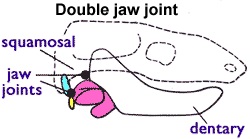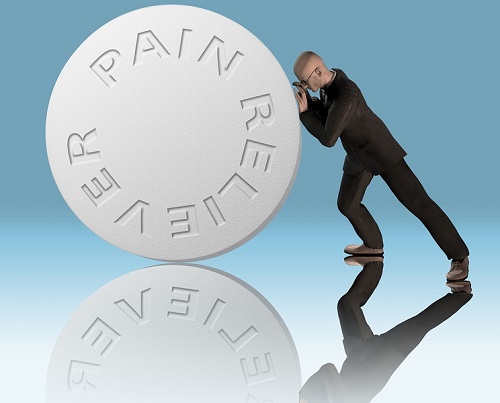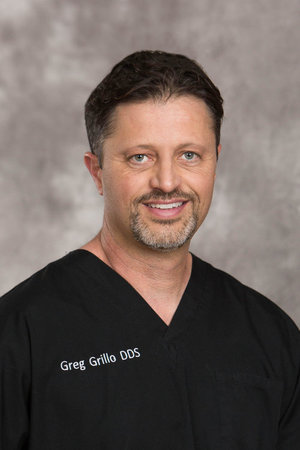TMJ Surgery: What is it and when is it Necessary?
A temporomandibular joint disorder is a problem for many people and, depending on your situation, you might not even realize a problem with TMJ disorder is causing your distress.
TMJ disorder or TMD occurs when there is a problem in the temporomandibular joint. This is the joint that connects your jaw to your skull at the front of your ears. If you put your fingers on either side of your face just in front of the nib of your ear you’ll be able to feel the joint move as you open and close your mouth. The joint makes it possible for your jaw to move and allows you to eat, talk, and yawn.
When there are problems with the TMJ you might experience pain in the immediate area. You might also hear a clicking or popping when opening your mouth or you might experience headaches or trouble sleeping.
Doctors and dentists are not entirely sure what causes TMD. It likely begins when there are problems with the jaw muscles or with the joint. This can occur because of injury to the head or neck or the immediate area or it can develop over time, especially when you tend to clench or grind your teeth, have arthritis in the joint, keep tension in the facial or jaw muscles, or experience movement of the soft cushion or disc that’s located between the ball and socket joint.
“The jaw joint is sometimes considered the most complex joint in the body. It should be treated accordingly. Dentists are your best bet for a conservative solution to most TMJ problems.”
How Do You Know You Have TMD?
Most people realize they have TMD because they are in pain. They might not realize the cause but they explain to their doctor or dentist that they are suffering from tenderness in their face or headaches and an examination reveals TMD.
TMD is more common for women than men and tends to flare up most often in people who are aged 20 to 40. Symptoms include:
- Pain or a tender feeling in the face or in your neck or right in the jaw joint shoulders when speaking, chewing, or opening the mouth, especially when yawning
- Inability to open your mouth wide
- Clicking, popping, or grating sounds when moving the joint
- Having the feeling of a stuck or locked jaw
- Fatigue in the face
- Discomfort when chewing
- Swelling on one or both sides of the face
- Toothaches
- Shoulder pain
- Headaches
- Dizziness
- Earaches or ringing in the ears
Treating TMJ Disorder
There are many treatments available for TMD. Sometimes, easing the problem is as simple as focusing on your movements and behavior and changing things for the better. For instance, if you notice you grind your teeth while awake, focus on stopping this behavior.
If you find mild behavior modification isn’t enough to ease your TMJ disorder symptoms, you still have plenty of other options.
Medications are available for treating TMD. Your doctor or dentist might recommend pain relief medication and anti-inflammatory drugs. These are over-the-counter medications that can ease the pain and, in some cases, help you curb the behaviors that are aggravating TMD symptoms.
Tricyclic antidepressants are another option for treating TMJ disorders. These medications are sometimes used for pain relief. Muscle relaxants are also a popular option for treating TMD. They can be taken for a few weeks to make it easier to retain the muscles in your face to remain in a natural resting condition that doesn’t aggravate your TMJ.
In addition to drug therapy, you might also benefit from devices that help you hold your jaw in a better position. Many people wear these mouth guards overnight to help them break habits and retrain their muscles. Physical therapy can also be used to stretch and strengthen the jaw. Some people find that heat and ice help them deal with the discomfort of TMD.
Sometimes, steroid injections are used to treat TMJ disorders
It might also be a good idea to attend a counseling session that helps you identify triggers for clenching or to find ways to avoid actions that aggravate the pain. Often, a combination of multiple therapies is the best route for dealing with TMD, especially when using non-drug therapies.
In some cases, TMD symptoms will be severe enough that you’ll need to undergo TMJ surgery. A few oral and maxillofacial surgery options are available.
Arthrocentesis is the least invasive option. In the procedure, a doctor inserts a small needle into the TMJ to irrigate fluid and remove debris and anything causing inflammation.
Modified condylotomy is a surgery that is performed on the mandible, which can help prevent the locking up of the jaw—something that can be inconvenient at the least and very painful at its worst.
Open joint surgery and corrective jaw surgery fix structural problems in the joint. There are risks involved, as is the case with all types of surgery. This is usually only an option in severe cases when other oral surgeries, therapies, and treatments have not fixed the problem. TMJ arthroscopy is similar to open joint surgery but less invasive.
A final surgery option is a total joint replacement. This is similar to other types of joint replacement surgeries—a synthetic joint replaces the natural, damaged jaw joint. This is rarely done but is an option when the natural jaw is severely defective.
Keep in mind, TMJ surgery does not 100% guarantee a cure. In some cases, surgery can even exacerbate the problem, so it is only recommended when the problem is severe and less invasive treatments have failed. Most people are able to deal with their TMD symptoms and at least get them under control using physical therapy or medication. Doctors typically recommend surgery when chronic jaw pain is disabling or there are structural problems in the jaw joint that surgery would repair.
The goals of surgeries should be discussed with your dentist and doctor in advance. It’s also important to understand the risks involved. Surgery is performed to restore normal jaw function and relieve.
Before deciding if TMJ surgery is right for you, make sure you understand everything involved. Like all surgery, there are secondary risks and there might be a significant recovery period. It’s also a good idea to get a second opinion.
Medically Fact-Checked & Written by Our Dental Editorial Team
You can read more about our editorial guidelines by clicking this link and learn more about the Emergency Dentists USA editorial team here.





